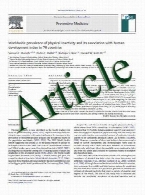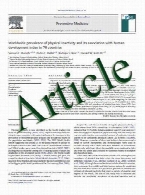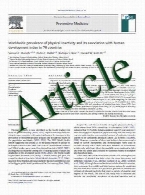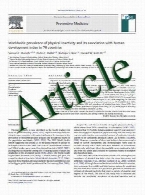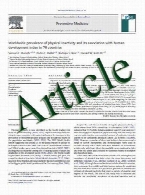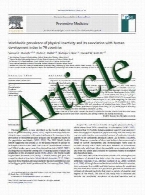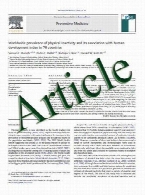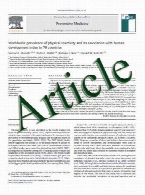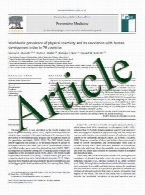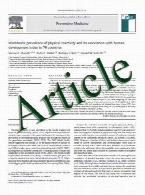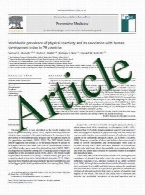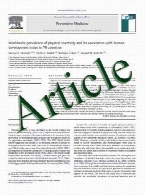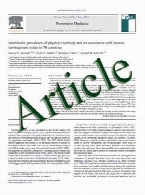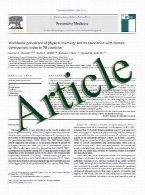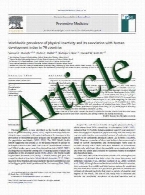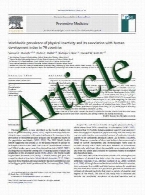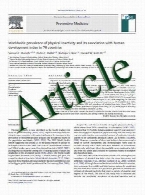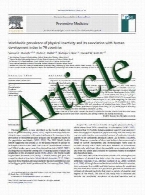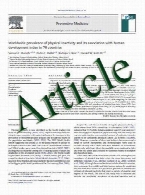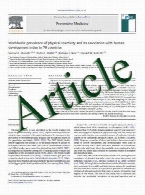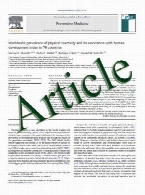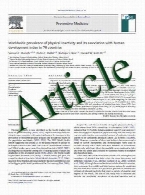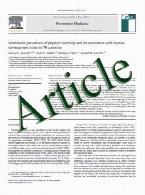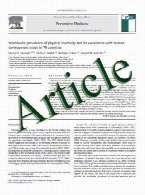

Is Intestinal Gluconeogenesis a ...
Background In 2008, Troy et al. hypothesised that under fasting conditions, intestinal gluconeogenesis generates glucose levels in the portal vein w ...
The Effects of Biliopancreatic ...
Background Beneficial effects of BPD on T2DM in BMI >35 kg/m2 patients are far better than those in patients with BMI 25–35. This study was aimed at ...
Reasons and Outcomes of Reopera ...
Background The rise of bariatric surgery has lead to an increasing number of reoperations for failed bariatric procedures. The reasons and types of ...
Determinants of Hyperhomocystei ...
Background Effectiveness of gastric bypass (GBP) on reduction of vascular risk factors is well established, but GBP induces nutritional deficits tha ...
The Gastric Sleeve: Losing Weig ...
Background Recently, the laparoscopic sleeve gastrectomy (LSG) has become popular as a single-stage procedure for the treatment of morbid obesity an ...
Voice Feature Characteristic in ...
Background Morbid obesity is highly prevalent in the Western World, and its consequences present a real public health challenge. Voice alterations c ...
Hepatic Expression of Adiponect ...
Background The prevalence of non-alcoholic fatty liver disease (NAFLD) in obesity is very high. The role of adiponectin receptors in NAFLD progressi ...
Weight Loss and Changes in Sali ...
Background Weight loss is associated with increased levels of adiponectin with a greater increase observed following Roux-en-Y gastric bypass (RYGB) ...
Relative Outcome Measures for B ...
Background Bariatric results expressed in the relative measure excess weight loss (%EWL) vary significantly by initial body mass index (BMI): the he ...
Diabetes Remission and Insulin ...
Background Most morbidly obese patients who undergo gastric bypass experience rapid remission of type 2 diabetes mellitus (T2DM) but the response in ...
Revisional Surgery for Failed V ...
Vertical-banded gastroplasty (VBG) was once a common bariatric procedure. It has fallen out of favor due to the emergence of the adjustable gastric ...
Skin Vasodilator Function and V ...
Obesity-associated microvascular dysfunction (MVD) involves different body tissues, including skin, and concurs to increased cardiovascular risk in ...
Laparoscopic Roux-en-Y Gastric ...
Laparoscopic Roux-en-Y gastric bypass (LRYGB) is one of the most widely used bariatric procedures today, and laparoscopic sleeve gastrectomy (LSG) a ...
Preoperative 4-Week Low-Calorie ...
Background The aim of this study was to explore changes in liver volume and intrahepatic fat in morbidly obese patients during 4 weeks of low-calori ...
Conversion from Band to Bypass ...
Background Morbidity after converting failed laparoscopic adjustable gastric banding (LAGB) to laparoscopic Roux-en-Y gastric bypass (LRYGB) is thre ...
Gastric Emptying of Orally Admi ...
Background Laparoscopic adjustable gastric banding (LAGB) provides weight loss in obese individuals and is associated with improved glucose homeosta ...
Adiponectin Downregulates Hyper ...
Background The resolution of type 2 diabetes mellitus is an additional outcome of Roux-en-Y gastric bypass (RYGB) surgery. The general objective was ...
Early Improvement in Glycemic C ...
Background The surgical treatment of obesity ameliorates metabolic abnormalities in patients with type 2 diabetes. The objective of this study was t ...
Observations Regarding ‘Quality ...
Background Although laparoscopic adjustable gastric banding (LAGB) and laparoscopic sleeve gastrectomy (LSG) are coexisting first-choice restrictive ...
Time-Resolved MRI After Ingesti ...
Background Laparoscopic sleeve gastrectomy (LSG) is generally considered a restrictive procedure. However, studies with nuclear medicine techniques ...
Changes in Satiety, Supra- and ...
Background Laparoscopic adjustable gastric banding (LAGB) induces and sustains weight loss, likely by activating the peripheral satiety mechanism. R ...
Relationship Between Obesity an ...
Background Obesity is one of the most important modifiable risk factors for the prevention of type 2 diabetes. The aim of this study was to examine ...
The Four Different Types of Int ...
Background Four different types of internal hernias (IH) are known to occur after laparoscopic Roux-en-Y gastric bypass (LRYGBP) performed for morbi ...
Expression Profile in Omental a ...
The adipose tissue is a highly regulated endocrine and paracrine organ that secretes a wide variety of biologically active molecules involved in the ...
Glycosaminoglycans of Abdominal ...
Background The number of post-bariatric patients had a significant increase over the last years, and a better understanding of the consequences of m ...

